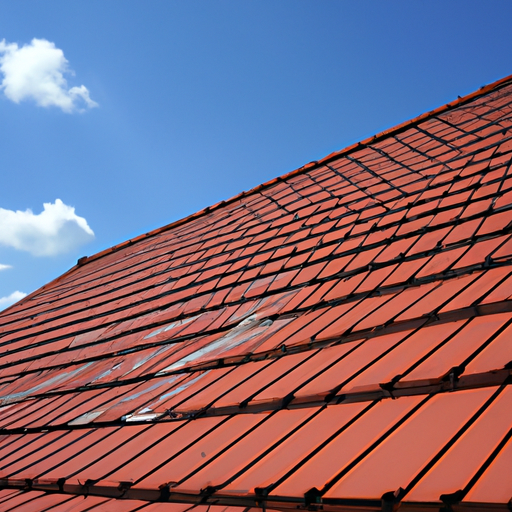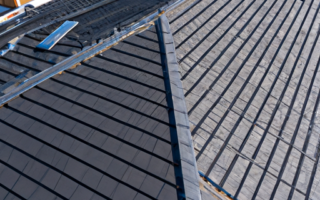Key Factors to Consider in Roof Construction: A Comprehensive Guide
Constructing a roof is a crucial task that requires careful planning and execution. To ensure a successful roof construction, there are several key factors that need to be considered. This comprehensive guide will walk you through the essential steps and provide valuable insights on achieving a well-built and durable roof.
1. Design and Architecture:
The design and architecture of a roof play a fundamental role in its construction. Consider factors such as the slope, size, and shape of the roof when planning the construction. The design should not only complement the overall aesthetics of the building but also effectively shed water and withstand environmental influences.
2. Roofing Materials:
The choice of roofing materials is another vital aspect of roof construction. Determine the appropriate materials based on factors such as durability, weather resistance, maintenance requirements, and budget. Common roofing materials include shingles, tiles, metal sheets, and membranes. Ensure that the selected materials are compatible with the design and purpose of the roof.
3. Structural Integrity:
A strong and stable roof structure is essential for long-term durability. Ensure that the roof framing, trusses, and supports are designed and built to withstand the weight of the roofing materials and any additional loads such as snow or wind. Engage a qualified structural engineer to assess the structural integrity and make necessary recommendations.
4. Proper Ventilation:
Adequate ventilation is critical for a healthy and functional roof. Proper ventilation helps to regulate temperature, reduce moisture buildup, and prevent issues such as mold and rot. Incorporate vents and insulation in the roof construction to ensure proper airflow and prevent potential problems.
5. Skilled Labor:
The success of roof construction highly depends on the skills and expertise of the labor involved. Hire experienced and qualified professionals who have a proven track record in roof construction. Ensure that they follow industry standards and adhere to safety regulations throughout the construction process.
6. Regular Maintenance:
To ensure the roof’s longevity and optimal performance, regular maintenance is crucial. Develop a maintenance plan that includes inspections, cleaning, and repairs as needed. Promptly address any signs of damage or deterioration to prevent further issues and extend the lifespan of the roof.
By considering these key factors and following the essential steps outlined in this comprehensive guide, you can confidently embark on a successful roof construction project. Remember, a well-built roof not only adds value to your property but also provides protection and peace of mind for years to come.
Essential Steps for a Successful Roof Construction Project
When it comes to roof construction projects, there are several essential steps that need to be followed in order to ensure a successful outcome. Whether you are building a new roof or repairing an existing one, these steps are crucial for the stability, durability, and longevity of the structure. In this comprehensive guide, we will delve into the essential steps required for a successful roof construction project.
1. Planning and Design
The first step in any roof construction project is careful planning and design. This involves assessing the roof’s requirements, understanding the building codes and regulations, and determining the most suitable roofing materials for the project. During this stage, it is essential to consider factors such as the climate, roof pitch, load-bearing capacity, and aesthetic preferences.
2. Proper Foundation
A solid foundation is crucial for any construction project, and a roof is no exception. The foundation of a roof includes the support structure and decking materials. It is necessary to ensure that the foundation is structurally sound and able to bear the weight of the roof. This usually involves the installation of sturdy beams, trusses, or rafters, depending on the design and requirements of the roof.
3. Waterproofing
A well-built roof should be able to withstand the elements, particularly water. Proper waterproofing is crucial to prevent leakage, water damage, and mold growth. This involves the installation of a waterproof barrier, such as underlayment or a membrane, which protects the roof’s structure and prevents water from infiltrating the building.
4. Quality Materials
The choice of quality roofing materials is essential for the longevity and performance of a roof. High-quality materials that are suitable for the specific climate and design considerations should be selected. This includes roofing shingles, tiles, or metal sheets that can withstand heavy winds, rain, snow, and UV radiation. Using subpar materials can lead to premature deterioration and costly repairs.
5. Skilled Installation
The installation of the roof requires skilled professionals who are experienced in roof construction. Proper installation techniques are essential to ensure the roof is structurally sound, properly sealed, and aesthetically pleasing. It is recommended to hire a reputable roofing contractor who can guarantee a high standard of workmanship.
6. Regular Maintenance
Once the roof construction is completed, regular maintenance is key to preserving its integrity. This includes periodic inspections, cleaning of debris, and prompt repairs of any damages. Regular maintenance will help identify potential issues early on and prevent them from turning into costly repairs down the line.
By following these essential steps for a successful roof construction project, you can ensure a roof that is not only functional and durable but also aesthetically pleasing. Remember that a well-constructed roof is an investment that will protect your property for years to come.



